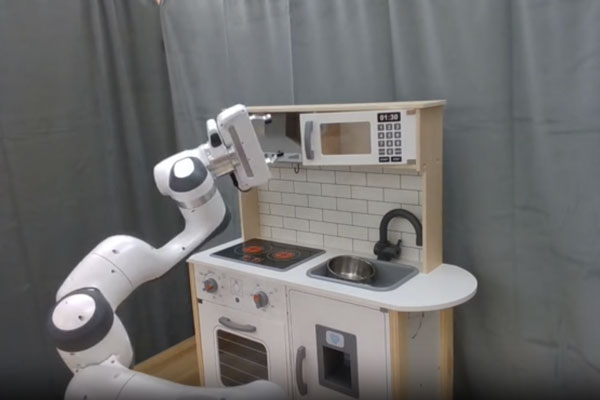The [MIT Technology Review] has just released its annual list of the top innovators under the age of 35, and there are some interesting people on this list of the annoyingly accomplished at a young age. Like [Lerrel Pinto], an associate professor of computer science at NY University. His work focuses on teaching robots how to do things in the home by failing.
To do this, he set up an example home in his lab, amusingly filled with kids’ toy versions of appliances like ovens, and then asked a robot to perform tasks like warming his lunch. [Lerrel] had given the robot a primer, a machine learning model based on 30-second videos of his students performing some of the tasks using the same tools that the robot would have, such as robot hands, fish slices, etc. Then he left them to it, trying to perform the tasks for 24 hours a day and judging their own performance.
This technique is called reinforcement learning, where the machine learning system tries something, considers how close it got to the example, and then tries something slightly different. He published the results in a paper entitled “Teach a Robot to FISH“, based on the old saying give a man a fish, and you feed him for a day. Teach him to fish and you will feed him for life. This paper is well worth reading, mainly as it includes lots of examples of how the tasks were broken down and trained. There is also an interesting video of a talk that [Lerrel] did for a presentation to the CMU Robotics Initiative.
EDIT 9/20/23: fixed link to the Arvix paper and the YouTube video.

















I don’t think your paper link works. Anyway failure is fine to a degree. Depends upon the consequences of failure.
Here is a valid link for the paper: https://arxiv.org/abs/2303.01497
All I get for the above video is “This video isn’t available anymore”
Found a valid URL for the video: https://www.youtube.com/watch?v=3O1rGmB7arc
Yes, try something different. Fail until you succeed.
James P Hogan’s book “two faces of tomorrow” has a virtual robot learning in a similar way – it’s nickname “fise” for fastest idiot seen on earth”
Also a Manga by Yukinobu Hoshino.
WTF?
@Richard Baguley said: “Helping Robots Learn By Letting Them Fail”
That’s what Elon has been doing for years with the never-ending ridiculously over-priced problem called: “Full-Self-Driving” (FSD).
Those weren’t Polish death camps, but Nazi German death camps. Your comment and the comment you replied to are off topic and not funny.
This same logic should be applied to people… no more “participation” awards.
@Mystick To people being aloud to fail. They did this back in the 70’s and again in the 90’s. The children that didn’t fail was put together and the one that did were also put together. The peruse was to see how fast the children would learn if they were put with like minds. But they didn’t take in account the children need to be superior over the other children. The lesser children learn to work together fast while the smarter children started to compete. And eventually the other’s just quit from the Constance fighting. They later did some thing like this in the 90’s to see what child would grow up to be a leader and who would follow. That experiment seem to work out better. It just seem that some children didn’t mind being lead. Which is why we are in the predicament today. The children today would rather follow and not stand out.